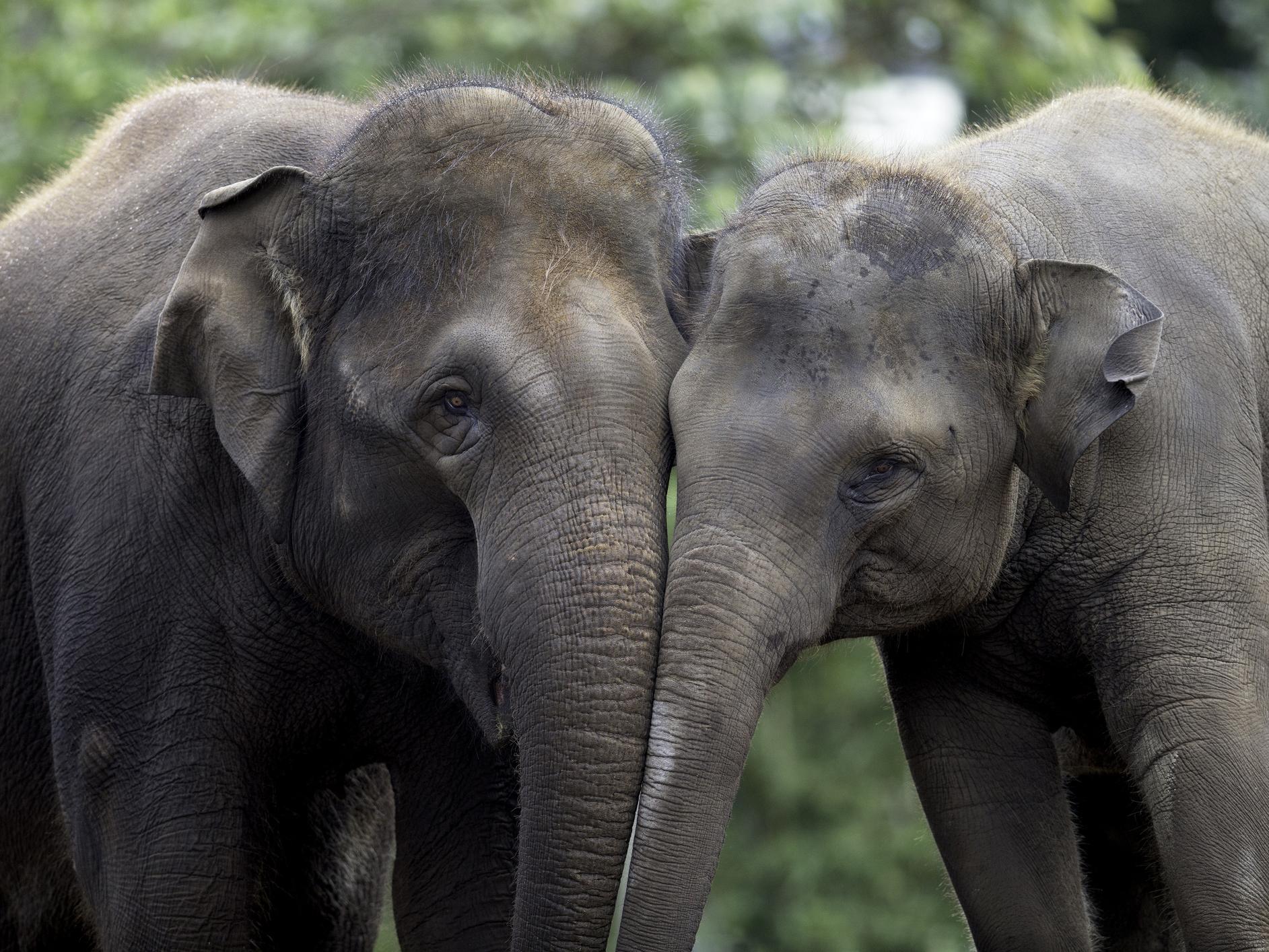Animals are always talking to each other, scientific review finds
Elephants, birds and naked mole rats all engage in the same kind of two-way conversations that humans have

Your support helps us to tell the story
From reproductive rights to climate change to Big Tech, The Independent is on the ground when the story is developing. Whether it's investigating the financials of Elon Musk's pro-Trump PAC or producing our latest documentary, 'The A Word', which shines a light on the American women fighting for reproductive rights, we know how important it is to parse out the facts from the messaging.
At such a critical moment in US history, we need reporters on the ground. Your donation allows us to keep sending journalists to speak to both sides of the story.
The Independent is trusted by Americans across the entire political spectrum. And unlike many other quality news outlets, we choose not to lock Americans out of our reporting and analysis with paywalls. We believe quality journalism should be available to everyone, paid for by those who can afford it.
Your support makes all the difference.Two-way conversations like the ones that humans engage in are found throughout the animal kingdom, scientists have found.
“Turn taking” has long been suggested as one of the key features that distinguishes human language from the noises made by our primate cousins.
But a new review has suggested that everything from the rumbling noises made by elephants to the chirps made by naked mole rats follow the same turn-taking rules.
Researchers from the UK and Germany found animal communication was still not well understood despite studies of birds dating back 50 years.
Lack of data and ironically poor communication between scientists had hampered direct comparisons between different species.
The authors of the new study highlighted timing as a key feature of communicative turn-taking in both humans and animals.
Some species were impatient chatterers as certain songbirds waited less than 50 milliseconds to "reply" during a conversation.
At the other end of the scale, slow-talking sperm whales exchanged clicks with a gap of about two seconds between turns.
Humans typically pause for about 200 milliseconds before responding in a two-way conversation and the scientists found that we are not the only species that consider it rude to interrupt.
Both black-capped chickadees and European starlings practised "overlap avoidance" during turn-taking communication.
Writing in the journal Royal Society B: Biological Sciences, the scientists said: "If overlap occurs, individuals became silent or flew away, suggesting that overlapping may be treated, in this species, as a violation of socially accepted rules of turn-taking."
The team also proposed a new framework for future animal research highlighting a number of essential elements of human conversation.
"The ultimate goal of the framework is to facilitate large-scale, systematic cross-species comparisons," said Dr Robin Kendrick, one of the study's authors from the University of York. "Such a framework will allow researchers to trace the evolutionary history of this remarkable turn-taking behaviour and address longstanding questions about the origins of human language."
The study marks a collaboration between experts in both human and animal language and the authors said they hope to inspire “more cross talk” between the different disciplines.
Language, which is often regarded as humanity’s most distinctive characteristic, is still largely mysterious in terms of evolutionary theory.
As turn-taking is still thought to play a key role in the early development of human conversation, understanding it in animals should help scientists unpick the origin of our species’ language.
However, despite covering birds, mammals, insects and frogs, the review’s authors noted that studies on turn-taking systems – such as gestural interactions used by bonobos and chimpanzees – are still relatively rare.
Another of the study's authors, Dr Simone Pika from the Max Planck Institute of Evolutionary Anthropology, said such studies will be necessary as they represent “the most promising avenue to tackle the question whether turn-taking played a key role in language evolution".
Additional reporting by PA.
Join our commenting forum
Join thought-provoking conversations, follow other Independent readers and see their replies
Comments